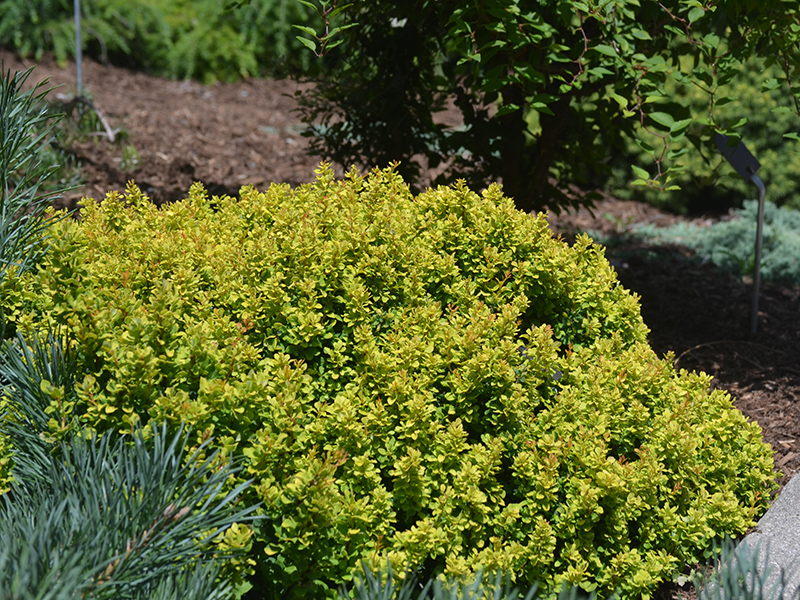
Woody > Berberis > Berberis thunbergii > Berberis thunbergii
Berberis thunbergii
Japanese Barberry, Thunberg's Barberry, Red Barberry
Origin: Japan.
| Family |
| Berberidaceae |
| Genus |
| Berberis |
| Species |
| thunbergii |
| Category |
| Woody |
| Type |
| Shrub (deciduous) |
| Pronunciation |
| USDA Hardiness Zone |
| 4 |
| Canadian Hardiness Zone |
| 2 - 5a |
| RHS Hardiness Zone |
| H7 |
| Temperature (°C) |
| -35 - (-29) |
| Temperature (°F) |
| -30 - (-20) |
| Height |
| 60 - 240 cm |
Photographs
Description and Growing Information
Flowering Period
| Landscape |
| Works well in gardens and as borders and groundcover. |
| Cultivation |
| Will thrive in any soil type that is not waterlogged, and should be grown in full sun. |
| Growth |
| Medium |
| ID Characteristic |
| B. thunbergii is most readily distinguished by the flowers being produced in umbels, not racemes. |
| Pests |
| The bacteria Pseudomonas berberidis may cause black spots on leaves, and the berberry aphid (Liosomaphis berberidis) may also be a problem. |
| Bark/Stem Description |
| Stems are angular, dark red and grooved, with simple spines. |
| Leaf Description |
| The leaves are green to blue-green, very small, spatula to oval shaped, 12-24 mm long and 3-15 mm broad; they are produced in clusters of 2-6 on a dwarf shoot in the axil of each spine. |
| Flower Description |
| The flowers are pale yellow, 5-8 mm diameter, produced in drooping 1-1.5 cm long umbrella-shaped clusters. |
| Fruit Description |
| The edible fruit is a glossy bright red to orange-red, ovoid berry 7-10 mm long and 4-7 mm broad, containing a single seed. They mature during late summer and autumn and persist through the winter. |
| Notable Specimens |
| The Gardens of Fanshawe College, London, Ontario, Canada. |
| Propagation |
| Propagate by seed or by cuttings. |
